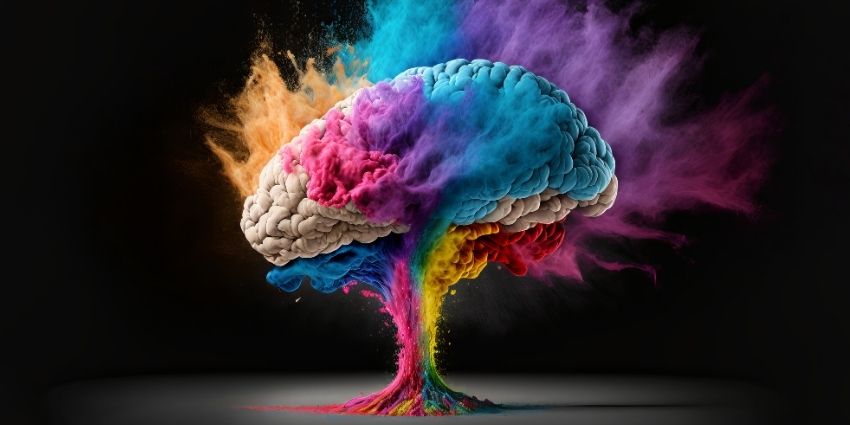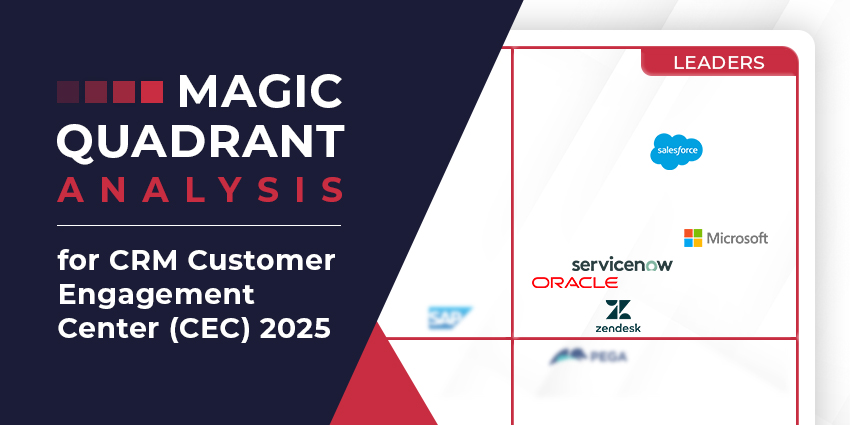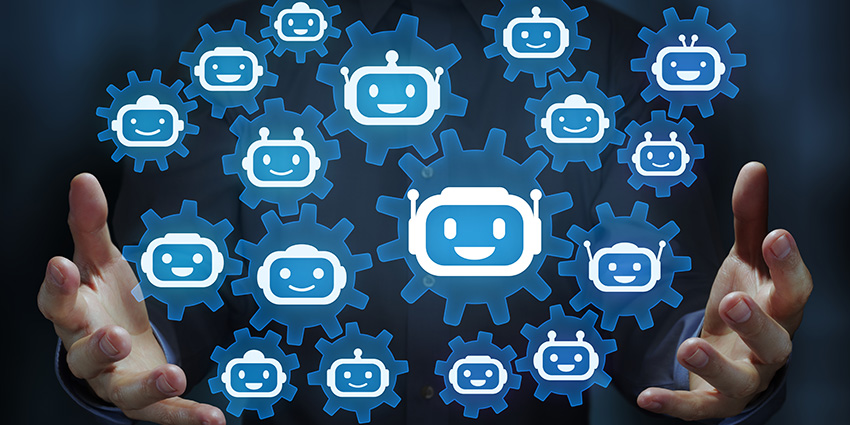Companies aren’t just using tools like ChatGPT to generate online content or social media captions anymore. Instead, generative AI (GenAI) is transforming marketing processes.
Indeed, marketing teams are thinking beyond simple content creation use cases, applying GenAI to social workflows, reporting, campaign generation, and beyond.
By late 2023, Salesforce found that, on average, marketers save approximately five hours a week with GenAI tools.
Yet, as more applications for the technology continue to come to light and large language models (LLMs) advance, expect this number to increase further.
Already, since Salesforce ran the study, more GenAI use cases have burst onto the marketing scene. Here are some of the best examples to look out for.
1. Content Creation
Example: HubSpot Breeze (for HubSpot Marketing Hub)
Since the launch of ChatGPT, content creation has emerged as one of the most popular use cases for Generative AI in marketing. However, the types of content companies can create have ramped up. Teams can now go beyond creating briefs, ad copy, and blogs with tools like Jasper and Writer.AI.
Additionally, solutions like the Breeze Copilot in HubSpot’s marketing hub can create landing pages, emails, and full marketing strategies with AI. The dedicated “Content Agent” can also produce case studies, landing pages, podcasts, and images with AI.
Lastly, the solution may optimize that content with keywords, source and cite relevant data, and even personalize campaigns for specific customer segments.
2. Video, Image, and Audio Production
Example: OpenAI Sora and ElevenLabs
The rise of multimodal language models has opened the door for content creation that goes beyond simply producing text. OpenAI’s Sora model and DALL-E 3 can create images and videos that complement marketing campaigns.
Dedicated platforms like Runway allow marketers to generate explainer videos, social-ready visuals, and even edit footage with a few prompts, no fancy post-production required. For example, marketers can automatically remove backgrounds, extend scenes, or create motion graphics on the fly.
Moreover, Adobe brings generative features into Photoshop and Premiere to streamline the creation of visual assets.
In the audio landscape, there are tools like ElevenLabs that empower companies to design videos with AI-generated voices, captions, and voice-overs. These tools can even translate content into various languages, supporting global reach.
Other notable platforms in this space include Synthesia, which combines AI voice generation with video avatars, and NaturalReader, offering a wide range of voices for commercial applications.
3. Audience and ICP Modeling
Example: Persona by Delve
Knowing who to target is just as important as knowing what to say. Audience modeling solutions, like Persona by Delve, help marketers move beyond spreadsheet-based Ideal Customer Profiles (ICPs).
Such solutions can also create dynamic profiles informed by CRM data, web analytics, and competitor research.
Rather than creating personas once per year, marketing teams can now refresh them weekly, even daily. Indeed, tools like Delve continuously analyze behavior patterns, segment overlap, and engagement data to predict who’s in-market and who’s ready to churn. This keeps targeting sharp and ad dollars efficient.
Meanwhile, solutions like Clearbit enrich ICPs with firmographic and technographic insights, while Mutiny puts those insights to work in personalized web experiences.
4. Customer Segmentation
Example: Twilio Segment
Great marketing is all about relevance, and to deliver personalized experiences, companies need to segment their audience. Generative AI can make it easier to identify and organize groups of potential prospects and existing customers.
Tools like Twilio Segment allow companies to prepare for an era of cookie-less marketing, helping them to collect valuable first-party data and learn more about their target audience.
Companies can also access tools that personalize messages for each segment, adjust content based on channels, and even provide insights into customer behavior predictions.
Other solutions – like those available on the Adobe Experience Platform – offer robust AI-driven segmentation capabilities, allowing for real-time data processing and audience insights.
As such, marketers may go further to deliver the right message to the right audience at the right time, optimizing marketing efforts and ROI.
5. Customer Outreach Sequencing and Orchestration
Example: Outreach.io
Omnichannel strategies aren’t just for customer service. Companies need to coordinate marketing and sales strategies across multiple channels, too. Coordinating journeys across various channels can be complicated, but Generative AI can help.
Solutions like Outreach.io use GenAI to help businesses design and manage multi-touch campaigns, optimizing content and timing based on customer engagement data.
Adobe, similarly, is building AI agents for its platform, specifically designed to enhance customer journeys across channels. The Journey Agent, site optimization agent, and content production agents can even work together to support multi-touch marketing campaigns.
6. Data Access and Query Generation
Example: ThoughtSpot AI
Companies need insights into their buyers’ journeys, the questions they have, and the decisions they make. But accessing and interpreting complex data sets to turn them into marketing strategies is challenging.
Tools like ThoughtSpot help less technical team members dive deeper into their data. They can ask questions like: “Which channels generated the most traffic last quarter?”, and ThoughtSpot can answer and cite its sources.
Other tools like SeekWell and AI2sql provide similar capabilities, translating natural language into SQL queries and enabling deeper data exploration.
7. Persona-Specific CTA Creation
Example: Originality.AI CTA Generator
Not every message or button will resonate with every audience in the same way. Tools like the Originality.AI CTA generator can give marketers an easy way to generate specific call to actions (CTAs) for specific customer segments.
All users need to do is type in a CTA idea, choose their tone of voice, and select their ideal target audience, and the solution does the rest.
Similar offerings, like Copty.AI’s CTA generator, also allow companies to upload specific ICP profiles and product details.
Plus, these tools can adapt CTAs across different languages and fine-tune existing CTAs sprawled across the business’s website.
8. Conversational Marketing
Example: Mailchimp
Products like Mailchimp allow companies to build comprehensive conversational workflows across various channels, dynamically adjusting content based on customer activity.
Such offerings automatically customize messages based on inputs like a customer’s browsing behavior or shopping history, and even suggest the right time to send a message.
Elsewhere, tools like Attentive help guide customers towards the right product or service with carefully orchestrated experiences, composed to boost marketing ROI and improve customer loyalty.
9. Social Media Marketing
Example: Ocoya
Generative AI is supporting social teams in planning, writing, designing, and publishing content at scale. Platforms like Ocoya combine AI-generated captions, hashtags, visuals, and even performance prediction into a single workspace.
With a solution like Ocoya, marketers can generate hundreds of post variations across platforms like Instagram, LinkedIn, Facebook, and Twitter. It uses GPT-based models to craft engaging captions and find the best time to post based on audience behavior. The AI even offers hashtag suggestions based on current trends and the post’s context, helping boost organic reach without the guesswork.
Ocoya and tools like Predis.ai or Lately can also turn long-form content (like blogs or videos) into bite-sized, shareable social posts. That means a single webinar or article can power an entire week of social media content, all without rewriting or repackaging it manually.
10. PPC Optimization
Example: AdCreative.AI
Companies investing in pay-per-click (PPC) advertising need to funnel a lot of time and effort into constantly analyzing and refining their content strategies.
Generative AI can save businesses time by generating ad copy, analyzing data, and sharing learnings.
Platforms like AdCreative.AI allow companies to create conversion-focused creative campaigns in seconds. The system can also identify which creatives perform best, score campaigns, and provide actionable insights into competitor results.
The more companies feed these tools data about their audiences, competitors, and campaigns, the more effective they become, reducing ad spend and improving ROI.
11. Search Engine Optimization (SEO)
Example: ContentShake AI by SEMRush
Search Engine Optimization (SEO) initiatives are still a priority for many marketers, even as online browsing experiences evolve.
Unfortunately, many companies struggle to create content resonates with human beings and search engines at the same time.
Thankfully, solutions like SEMRush’s ContentShake AI, for instance, combine the company’s proprietary SEO data with generative AI to help teams create content.
From there, it suggests ideas and topics based on what’s trending and adapts to versatile brand voices.
The solution also shows companies how to embed keywords into content naturally, find terms that align with different levels of intent, and improve targeting strategies.
12. Sentiment Analysis
Example: Qualtrics
When marketers know how customers feel at each customer experience touchpoint, they can orchestrate journeys and deliver more impactful campaigns.
Tools like Qualtrics’ Sentiment Analysis provide in-depth insights into how customers feel about brands, helping them to stand out from the competition. The AI solutions also monitor multiple sources of data at once, from social media mentions to forum comments.
These tools help businesses build more personalized and meaningful campaigns. Additionally, they allow them to monitor, protect, and preserve brand reputation across channels.
13. Meeting and Conversation Transcription
Example: Otter.AI
Today’s customers are looking for more authentic, unique content. One of the best ways for companies to create that content is to draw on real conversations with customers. Case studies and thought leadership articles that contain real-world insights can significantly increase conversion rates.
Meeting and call transcription tools, like Otter.AI, can help businesses capture every detail of a conversation, so they can transform it into eye-catching and engaging content.
These tools may also support marketing teams in collaborating more effectively with sales and customer service experts, streamlining cross-functional conversations.
14. Content Localization, Translation, and Reformatting
Example: Lokalise
Companies expanding into global markets need to adapt their marketing strategies to suit new audiences and languages. Generative AI can play a big role here.
For instance, tools like Localise can help marketers adapt their content for different regions, maintaining their tone of voice, while adjusting for different cultural nuances.
The platform also allows companies to add their own context, like style, tone of voice, and glossary guides, so translations don’t feel “generic”.
Plus, teams can edit the content within the app and immediately publish it to a range of popular content management systems.
15. Brand Tracking
Example:Sprinklr Marketing
Many generative AI solutions not only synthesize posts with brand mentions but also broader trending topics that align with the brand.
As such, marketing teams gain new insights into trending topics and what customers are talking about online, enabling new, actionable insights.
These insights may come in the form of prescriptive recommendations or via visualizations, which marketing teams can leverage to bolster brand management initiatives.
The Future of Generative AI in Marketing
Generative AI is quickly making its way into many aspects of the go-to-market workflow.
For marketing teams, the right tools introduce an opportunity to not just streamline content creation but also boost ROI and deliver more personalized experiences to customers throughout the funnel.
So, while AI might not eliminate the need for creative experts and customer-facing employees in the future, it’s definitely making marketing teams more efficient and intuitive.
Learn more about the evolving applications of generative AI, with these guides into the top GenAI uses for customer service and sales.







